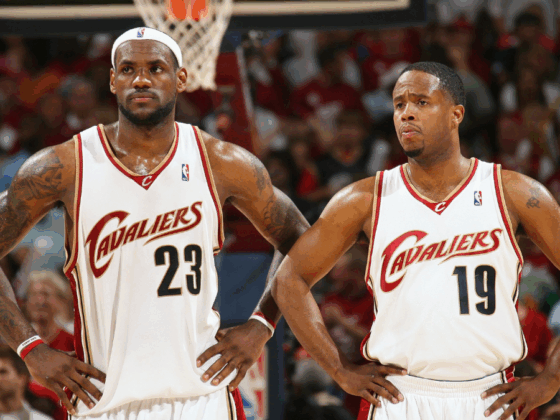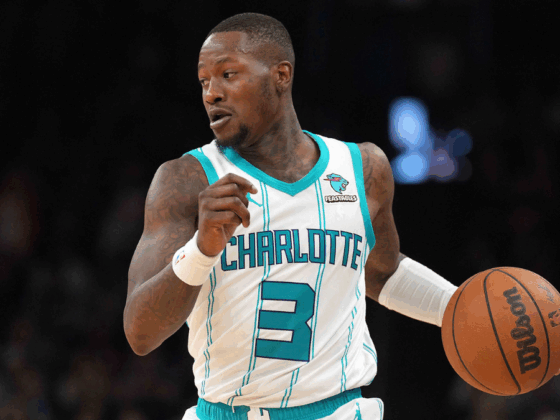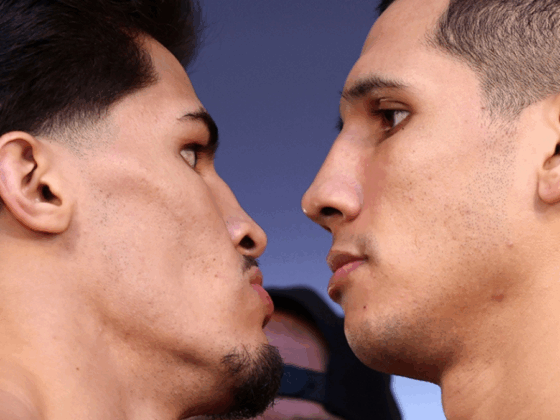
When the 2017-18 NBA season concluded, placing faith in Donovan Mitchell to become a superstar was everything but a hot take. The 6-foot-3 guard had just wrapped up a ridiculously fun rookie campaign, where he averaged 20.5 points, 3.7 rebounds and 3.7 assists per game, all while willing his Utah Jazz squad past the Oklahoma City Thunder and into the second round of the packed Western Conference playoffs.
With an ability to get to the rack with ease and finish in a variety of ways (including some jaw-dropping dunks), a streaky but workable 3-point shot, and a budding playmaking skill set, Mitchell looked like he would quickly rise up the echelons of NBA stars. However, as his much anticipated sophomore season progressed, the 22-year-old looked to have contracted a serious case of second-year blues.
As his Utah team struggled to replicate the dizzying highs they set last season, Mitchell’s inefficient shooting was at the center of his squad’s struggles. From day one of the season up until the end of December, only 13 players who averaged over 25 minutes per game had a worse effective field goal percentage than Donovan Mitchell’s 46.4 percent clip. Despite still putting up a tick over 20 points per game, the Rookie of the Year runner-up was shouldering far too much offensive load for the way he was shooting the ball. To make matters worse, the Jazz finished 2018 at 11th place in the West with an underwhelming 18-19 record.
In the 33 games he played before the calendar flipped, Mitchell converted on over 50 percent of his field goals just eight times. A missing persons report was filed for his 3-point shot, and he was among the worst high-volume finishers around the rim and from floater range; the very shots that made him such a tantalizing prospect last season.
Then the year ended. And Donovan Mitchell made the same (usually arbitrary) promise that so many of us make when we are fresh and excited for the new year:
New year, new me.
— Donovan Mitchell (@spidadmitchell) January 1, 2019
While the pacts us mere mortals make with ourselves usually dwindle almost immediately, Mitchell has proven that his tweet was more than just words. He has entered the new year moonlighting as a flamethrower. And he is dragging Utah to wins once again.
The Jazz has won eight of the 10 games they have played in 2019, an impressive stretch that has pushed them into the seventh seed in the Western Conference. In those 10 outings, Mitchell is putting up 26.9 points, 3.8 rebounds and 4.8 assists per game. Most importantly, he is doing so with remarkable efficiency, shooting 46.9 percent from the field and scorching 42 percent from long-range. Using the same aforementioned measuring stick of players who have played over 25 minutes a night, Mitchell ranks 75th league-wide in effective field goal percentage. A complete 180 from where he was before the year kicked off.
He is finishing with more gusto at the rim, and those clanks from the floater range (non-restricted area paint points) have become nothing but a distant nightmare. He converted 38.1 percent (4.5 attempts) of those shots before the year ended, but he has upped that to 46 percent on 5 attempts per game since then. Per NBA stats.
As you can see below, Mitchell’s floater mojo has well and truly returned. He rejects the Rudy Gobert screen with a crisp crossover that sends Evan Fournier sliding in the wrong direction, before using his patented shuffle-step hesitation move to freeze Nikola Vucevic and lob up the teardrop.
This play has been a staple of the guard’s offensive repertoire in his short career, and he is finally hitting them at a consistent rate again:
While his moves and process haven’t changed, one thing has changed in Mitchell’s offensive role: His position. With the injury bug gnawing away at the three pure point guards (Ricky Rubio, Dante Exum, Raul Neto) on the Jazz roster this year, coach Quin Snyder has had no choice but to launch faith into his young star. And he is reaping the rewards.
In a recent radio interview on The Zone Sports Network, Snyder outlined how he has been grooming his star guard’s basketball IQ lately.
“You hear a lot of talk about his reads. I think there is a lot of different situations that he has to read. He doesn’t have to be concerned with trying to read everything at once, for him to attack allows him then to make decisions and some of them are going to be good and some you’re going to look back and say ‘you should have passed’ or ‘you should have shot’,” he said.
With the onus of being the lead guard forced upon him, Mitchell has begun making those reads his coach spoke about faster and with more precision. In the play you’re about to see, Mitchell could have easily put the burners on and tried to use his insane athleticism to jet toward the rim in a broken floor situation. Instead, he makes a quick and smart decision to fire the ball to Kyle Korver, who remains one of the deadliest shooters in the world, on the opposite side of the court.
Korver drained the 3-ball to tie up the game, and the Jazz used the momentum it built to carry on and win.
Those kind of unselfish, run-sparking plays act as the engine that keeps winning teams motoring along. They are the kind that Mitchell couldn’t seem to put together before this stretch, and they are the kind that have him humming at the moment.
With his the new year and new role helping him prop up what was a sagging season, Mitchell has thrust himself right back in the conversation for the best young players in the league. The fact that he is leading his team to wins and playoff contention only strengthens that claim.
Perhaps a stereotypical New Years Day tweet was what flipped the script for Donovan Mitchell. However, it is more likely that he was always destined to turn things around. He simply has far too much talent to have been held down for the entire season.
Now, the goal is to keep up this hot streak. If he can, the Utah Jazz will once again be a team nobody wants to face when the postseason rolls around.
*All statistics are accurate as of December 19*






